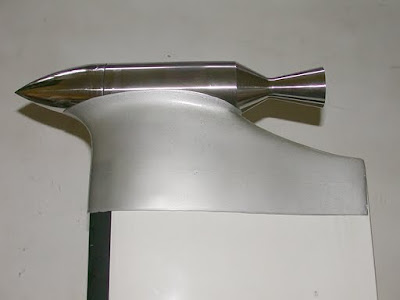How crazy it seems today to be have a backpack which carry you to your desired destination place via air........? But in future you might be one to hang on this to travel to your friend's door, it might become a style statement and passion of many people to ride this as that of riding a sports bike.......

By using tiny rocket motors at the tips of the rotor blades, the Libelula eliminates the torque which makes a tail rotor necessary in a conventional helicopter. This in theory makes it much more reliable, which is a good thing when you’re hanging from a backpack a few hundred feet above terra firma. (Pics)

The rockets are installed in a military UAV helicopter, they are only 1-1/2″ in diameter and less than 10″ long and with this engines a rotor blade produced more than 2200 lbs of lift.

The best thing about this kind of helicopter is that it doesn’t need a tail rotor. The outer rockets don’t cause any torque, so with a simple vane, it becomes the simplest form of a helicopter, and the easiest and safer to fly.
Because 80% of the helicopter accidents are blamed to tail rotor failure, this eliminates that problem.

This is a very interesting design, but not a new concept. Here are some suggested improvements :
ReplyDelete- Relocate the rockets closer to the axis to increase velocity and lift-energy efficiency.
- Instead of just the groin-painful straps to hold the operator's body, augment these with straps that go down the legs to the feet, with foot stirrups
- The rotor wings can, and should, be foldable for compact storage and car-transport.
Your design is actually a much smaller, lighter and practical PFM (personal flight machine) than the very practical (and amazingly cancelled) 1980s Williams X-Jet !
ReplyDeleteHeres some more suggestions to improve it :
- The curved bar coming down in front of the operator is not only totally unnecessary, it unsafely (and annoyingly) blocks the operator's forward view. The hand controls should instead be mounted on comfortably padded up-folding armrests at the sides.
- The rotor should have (and can accommodate) up to eight blades; more blades (which can be made of light carbon-fiber or titanium) provide more efficient lift energy, and the more blades there are, the shorter the blades can be.
- During forward flight, the optimum comfortable position of the operator should be at approx 45-degrees, therefore, there should be a gimbel hinge at both sides (at hip level) to allow the operator and rotor to pivot forward to 45-degrees during forward flight